Braised pork, a beloved dish across global cuisines, is celebrated for its melt-in-your-mouth texture and rich, savory flavor. Achieving that coveted tenderness—where the meat practically disintegrates with a gentle nudge of the fork—requires a blend of patience, technique, and understanding of the science behind cooking. Whether you’re crafting a hearty stew, a fragrant Asian-style braise, or a rustic European ragù, mastering the art of slow-cooking pork ensures a result that is both comforting and gourmet. This comprehensive guide explores the key steps, ingredients, and tips to transform tough cuts of pork into a culinary masterpiece.
Selecting the Right Cut of Pork
The foundation of tender braised pork lies in choosing the appropriate cut. Tougher, collagen-rich muscles are ideal for slow cooking, as the prolonged heat breaks down connective tissues into silky gelatin, resulting in luxurious tenderness. Opt for cuts like:
- Pork Shoulder (Boston Butt): Marbled with fat and connective tissue, this cut becomes incredibly tender when braised.
- Pork Belly: Its layers of fat and meat yield a rich, unctuous texture.
- Pork Hock (Ham Hock): A bony cut with ample collagen, perfect for stews and soups.
- Pork Cheeks: Though less common, their natural tenderness and flavor shine when slow-cooked.
Avoid lean cuts like tenderloin or loin chops, as they dry out quickly and lack the necessary fat and collagen for braising.
Preparation: The Key to Flavor and Texture
A. Cutting and Trimming
- Uniformity: Cut pork into large, even chunks (3–4 inches) to ensure consistent cooking. Smaller pieces may overcook and become stringy.
- Fat Management: Leave a thin layer of fat for moisture and flavor, but trim excess hard fat to prevent greasiness.
B. Searing for Depth
Browning the pork before braising is non-negotiable. This step, known as the Maillard reaction, caramelizes the meat’s surface, creating layers of umami and complexity.
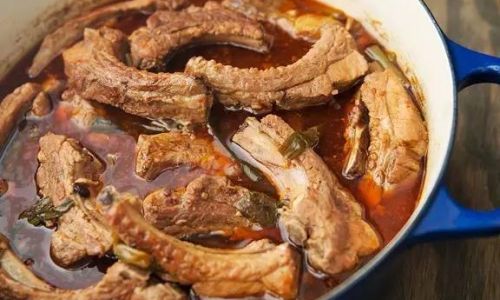
- Technique: Heat a tablespoon of oil in a heavy-bottomed pot (like a Dutch oven) over medium-high heat. Sear the pork in batches to avoid overcrowding, ensuring each piece develops a golden-brown crust.
- Deglazing: After searing, deglaze the pot with a splash of liquid (wine, broth, or vinegar) to dissolve the caramelized bits (fond) stuck to the bottom. These bits are flavor gold.
C. Aromatics and Seasonings
Enhance the pork’s flavor with aromatics like garlic, onions, carrots, and celery. For global flair, incorporate:
- Asian Flavors: Ginger, star anise, soy sauce, or hoisin sauce.
- European Notes: Thyme, rosemary, bay leaves, or tomato paste.
- Latin Twists: Cumin, oregano, or smoked paprika.
The Braising Liquid: Balancing Act of Acid, Sweetness, and Umami
The braising liquid serves dual purposes: tenderizing the meat and infusing it with flavor. A well-balanced liquid combines:
- Acidity: Wine (red, white, or sherry), vinegar, or tomatoes help tenderize and brighten the dish.
- Sweetness: A touch of sugar, honey, or caramelized onions balances richness.
- Umami: Broth (chicken, beef, or vegetable), soy sauce, or anchovies add depth.
- Liquid Ratio: Use enough liquid to submerge the pork halfway (typically 2–3 cups for 2 lbs of meat). Overcrowding the pot leads to steaming rather than braising.
Pro Tip: For extra tenderness, add a small amount of dairy (milk or cream) during the final hour of cooking. The lactose aids in collagen breakdown.
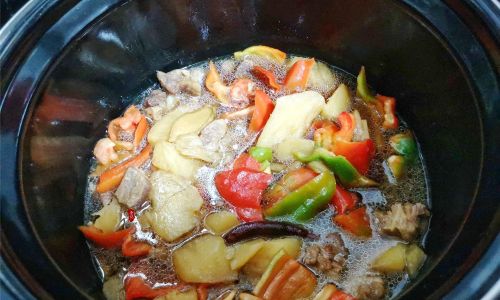
Cooking Techniques: Low and Slow Wins the Race
A. Oven Braising
- Temperature: Preheat the oven to 275–300°F (135–150°C). Low heat ensures gentle, even cooking.
- Method: After searing, transfer the pork and braising liquid to an oven-safe pot. Cover tightly and cook for 2.5–4 hours, or until the meat pulls apart effortlessly.
B. Stovetop Braising
- Simmering: Maintain a gentle simmer (barely bubbling) over low heat. Avoid boiling, as aggressive heat toughens the meat.
- Time: Similar to oven braising, but check periodically to adjust heat.
C. Slow Cooker Magic
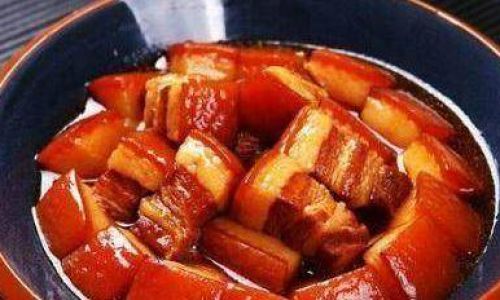
- Settings: Use the “low” setting for 6–8 hours. The moist, consistent heat guarantees fork-tender results.
- Adaptation: Sear the pork first, then transfer all ingredients to the slow cooker.
D. Pressure Cooker Hacks
- Speed: Reduce cooking time to 45–60 minutes under high pressure.
- Caution: Ensure the meat is submerged to prevent drying out.
The Waiting Game: Patience and Testing
Resist the urge to rush the process. Collagen converts to gelatin only after 1.5–2 hours of slow cooking. Test doneness by:
- Fork Test: The meat should yield effortlessly when pierced.
- Pull Test: Gently tug a piece; it should fall apart without resistance.
Finishing Touches: Reducing and Glazing
Once tender, remove the pork and reduce the braising liquid to intensify flavor.
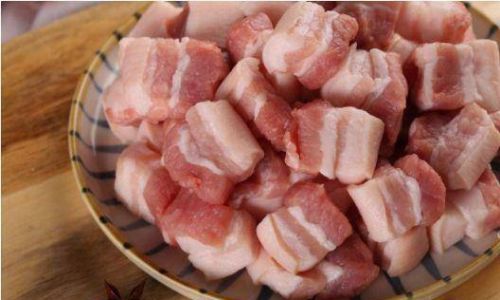
- Strain: Optional, but removing solids creates a cleaner sauce.
- Reduce: Simmer the liquid over medium heat until it coats the back of a spoon.
- Glaze: Return the pork to the pot and spoon the reduced liquid over it for a glossy finish.
Regional Variations and Inspirations
- Chinese Red-Braised Pork (Hong Shao Rou): Combine pork belly with soy sauce, rice wine, rock sugar, and star anise. Serve with steamed buns or rice.
- Italian Porchetta: Marinate pork shoulder with fennel, garlic, and rosemary, then roast low and slow.
- Mexican Carnitas: Crisp braised pork in its own fat for crunchy edges.
Common Pitfalls and How to Avoid Them
- Tough Meat: Undercooking or high heat. Solution: Extend cooking time and ensure low heat.
- Greasy Broth: Excess fat. Solution: Chill the broth overnight and scrape off congealed fat.
- Bland Flavor: Insufficient seasoning or skipping the sear. Solution: Layer flavors with aromatics and deglaze aggressively.
Serving Suggestions
- Rice Bowls: Layer pork over rice with a fried egg and kimchi.
- Tacos: Shred the meat and stuff into tortillas with salsa verde.
- Pasta: Toss with pappardelle and Parmesan for a rustic ragù.
- Soup: Add to ramen or pho broth with noodles and veggies.
Storage and Leftovers
Braised pork improves in flavor after a day. Store in an airtight container for up to 4 days, or freeze for 3 months. Reheat gently with a splash of broth to maintain moisture.
Conclusion: The Alchemy of Time and Heat
Mastering the art of braising pork is a testament to the transformative power of slow cooking. By selecting the right cut, building layers of flavor, and embracing patience, even the toughest pork becomes a tender, flavorful triumph. Whether you’re simmering a weeknight stew or crafting a feast for guests, this technique guarantees a dish that warms the soul and delights the palate. So, fire up the oven, gather your ingredients, and let time work its magic—your taste buds will thank you.

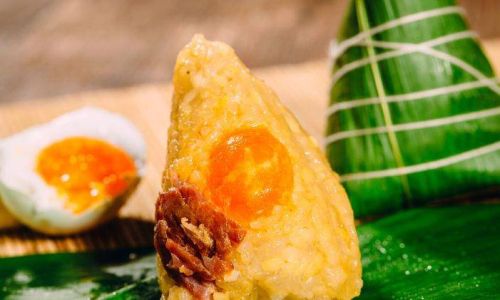

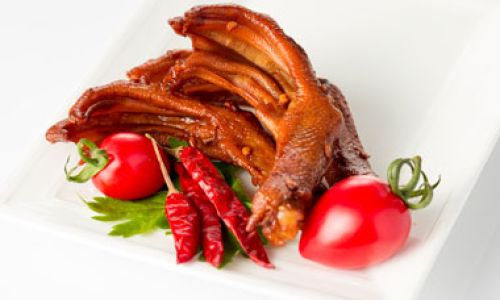

0 comments